Ray Goforth had rarely seen one of Boeing’s experienced flight simulator instructors lose their cool.
It was around 2013, and the American aerospace giant was preparing to close down the simulator facility at its historic home near Seattle and move those machines more than 2,700 miles across the country to Miami. That meant laying off the small crew of veteran instructors – who, it just so happened, had recently joined the labor union SPEEA.
But one instructor, named Willy, was worried about more than his job. He knew that Boeing’s own engineers would frequently drive over from their offices nearby to test out the quirks of aircraft they were building. Without such easy access, what future problems might be missed?
“These pilots are… super calm under pressure,” recalls SPEEA’s executive director Ray Goforth, who sat in on the negotiations, in an interview with The Independent.
“But [Willy] lost his temper, which was very surprising, and he yelled at them: ‘I don’t know how, I don’t know why, but the decisions you’re making are going to end with a smoking hole in the ground.’”
That conversation came back to Goforth’s mind in 2019, when Boeing was forced to suspend production of its 737 Max airliner after two crashes in which flawed manoeuvring software overrode pilots’ input and ploughed their planes into the Earth, killing a total of 348 people.
“Willy was right,” Goforth remembers thinking. “When you start throwing that experience away, you don’t know what you’re breaking.”
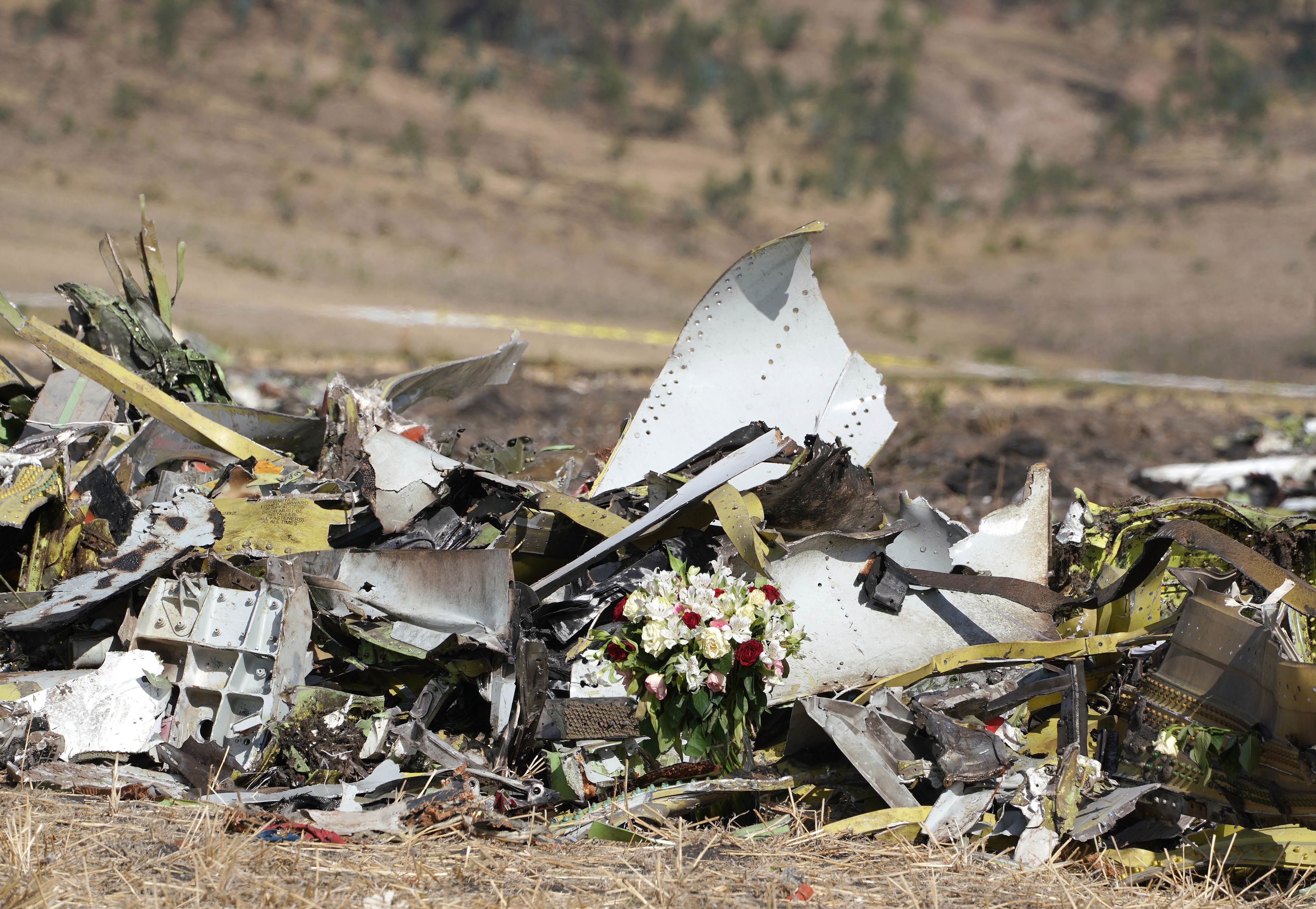
A bouquet of flowers is left at the site of the Ethiopian Airlines Boeing 737 Max crash (Getty Images)
Today Boeing is mired in the deepest crisis in its history after a string of serious safety failures that have horrified passengers, grounded numerous planes, and cost tens of billions of dollars.
Once considered the jewel of American manufacturing prowess, the company is under close scrutiny by the US Federal Aviation Administration (FAA) and has been forced to eject several executives, including its CEO Dave Calhoun.
In January, an Alaska Airlines flight narrowly avoided disaster when a door plug – that is, a metal panel that replaces an optional exit door – suddenly blew out at 16,000 feet. Though no one was killed, a preliminary investigation found that the door plug appeared to be missing four key bolts.
And on Wednesday, the US Senate will hear testimony from a trio of experts who recently audited Boeing’s safety culture, as well as a whistleblower who claims that it punished him for reporting his concerns.
To be clear, Boeing’s simulator layoffs didn’t cause those fatal 737 Max crashes. Yet critics say that decision was symptomatic of a corporate culture that has badly degraded the quality of Boeing’s aircraft through a 20-year regime of cost-cutting and cover-ups.
The cult of shareholder value
The story of Boeing’s long decline begins with an idea: that the purpose of a corporation is to maximize “shareholder value”.
Today this idea is orthodoxy throughout the business world. But in 1970, when the neoclassical economist Milton Friedman declared that increasing profits was a company’s “one and only social responsibility”, it was considered radical.
The idea gained traction, and by the late Nineties, America’s boardrooms were dominated by the cult of shareholder value. Buccaneering executives such as longtime General Electric chief Jack Welch – known as “Neutron Jack” for his habit of firing the ‘worst’ ten per cent of his managers every year – were lionized for their relentless focus on delivering dividends to investors (though Welch has since disputed that “shareholder value” was ever his main goal).
“The way a well-run company works is that people and technologies come first; customers are made happy by that; and that ultimately shows up in the share price,” says Richard Aboulafia, an aerospace consultant who has been sounding alarms about Boeing’s corporate strategy for many years. “But the way GE was run [under Welch] was: ‘No, no, you don’t need any of that. It’s just about the share price’.”
That, according to multiple journalists who have covered Boeing’s history in depth, is what the company began to embrace after its 1997 merger with a struggling rival aerospace company called McDonnell Douglas.
Driven by the deregulation of the US airline market under presidents Jimmy Carter and Ronald Reagan, which had eroded their formerly cosy position, Boeing’s executives were keen to absorb the cost-cutting culture of their longtime rival.
And so it was the smaller firm that ended up dominating its buyer, with McDonnell Douglas executives put in charge of the new merged company. “The joke at Boeing was: McDonnell Douglas used Boeing’s money to buy Boeing,” says Aboulafia.
For Stan Sorscher, a veteran Boeing engineer and later labor union SPEEA staffer who dealt often with company managers and employees, the difference was palpable. For decades Boeing had been led by engineers like him, who respected expertise and were focused on quality above all else.
After the merger, he tells The Independent, executives increasingly disregarded the engineers’ perspectives, demanding that they work backwards from ill-informed corporate mandates delivered from on high by professional managers with little aviation experience.
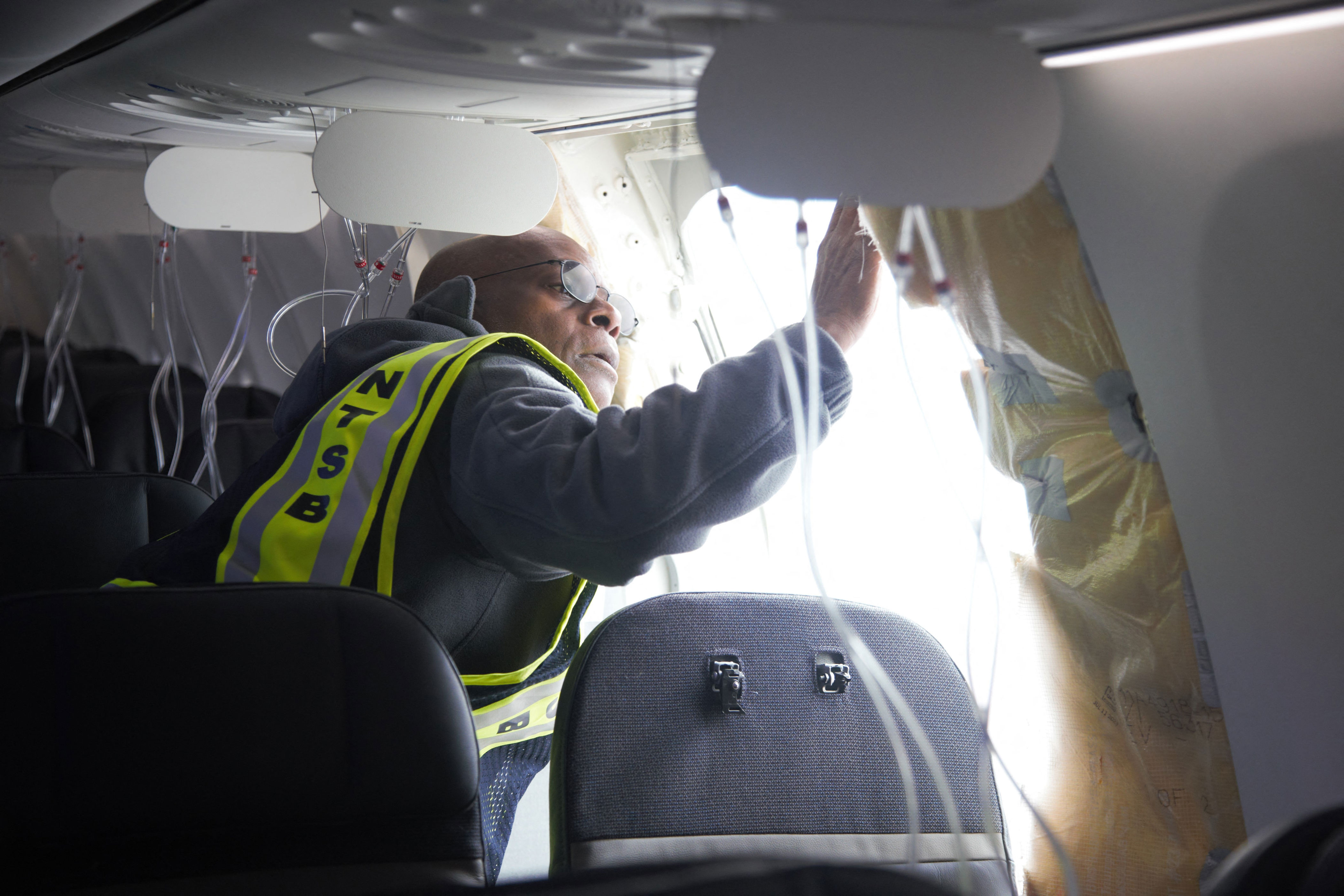
A handout picture showing the Alaska Airlines Boeing investigation after a door plug blew out at 16,000ft (NTSB/AFP via Getty Images)
Aboulafia reserves particular scorn for Jim McNerney, Boeing’s CEO between 2005 and 2015, who reportedly saw technical experience as overrated and frequently troublesome. Under him and his successors, Aboulafia contends that Boeing became “a one-size fits all corporate culture focused on cutting costs and nothing else”, so indifferent to quality that it “made McDonnell Douglas seem like Apple.”
Meanwhile, Boeing diverted vast sums of cash away from its core business and towards investors. It drastically increased the dividends it paid out for each share, while spending billions of dollars per year on buying back its own stock in order to prop up the price.
According to an analysis by Marie Christine Duggan, an economics professor at Keene College in New Hampshire, the proportion of Boeing’s free cash flow spent on dividends and buybacks rose from around 23 per cent in 1990 to 66 per cent by 2017. Meanwhile, the proportion spent on new machines and equipment plummeted.
In short, Duggan tells The Independent, Boeing’s real product had become its share price.
To both Duggan and Aboulafia, this was an audacious piece of corporate siphoning – and not one that could be sustained. If these massive payouts were only made possible by slashing investment in new airplanes, how long would it be until the money ran out?
Indeed, when McNerney stepped down in 2015, Aboulafia warned that Boeing would one day pay a “high price” for his short-termist leadership.
“Ultimately the competitiveness of a jetliner producer depends upon its suppliers and its workforce. There’s nothing else, when you think about it,” says Aboulafia now.
“So if you treat both like disposable commodities – if you regard them as something to be broken, [and] squeezed for costs no matter the consequences – then there’s going to be trouble down the road.”
Outsourcing and alleged union-busting
The first major test of this new management approach was the 787 Dreamliner.
After announcing the aircraft in 2003, Boeing’s leaders gave engineers a stark challenge: build it for less than 40 per cent of what the Boeing 777 had cost more than a decade beforehand.
To accomplish this, McNerney and his predecessor Harry Stonecipher decided to outsource many of the Dreamliner’s individual components to other companies, relinquishing some control over design and production in the hope of externalizing the costs of developing and building new aircraft.
That approach might work well for other industries, whose products are less complex and tend to kill fewer people when they fail. For Boeing, it resulted in a plane delivered three years behind schedule and a reported $9bn over-budget, which had to be grounded less than two years after its 2011 debut due to a series of electrical fires caused by malfunctioning batteries.
“It was, I think, without question the worst airplane program in the history of the industry,” says Sorscher, who had spent years trying to persuade bosses and financial analysts that Boeing’s new regime wouldn’t work.
To his surprise, however, Boeing’s bosses were not deterred by these failures. Instead, they doubled down.
In 2011, for example, after Boeing’s suppliers started enjoying better profit margins than Boeing itself, McNerney demanded that they cut their prices by as much as 15 per cent – an initiative innocuously titled ‘Partnering for Success’ (“Orwell would have a field day with this s**t,” Aboulafia says). Those who refused would be put on a “no-fly list” and barred from further business with Boeing.
The company broke with nearly a century of tradition and said it would assemble its new 787 Dreamliner at a new, non-unionized factory in South Carolina. US labor officials sued the company, alleging that the move was an act of retaliation for past strikes – only to withdraw that accusation in 2011 as part of a settlement.
It was, says Ray Goforth, as if a “poison” was spreading through the company. Experienced test pilots were laid off and replaced by less experienced contractors. Its technical support center, which provides live help to airlines experiencing trouble with Boeing craft, was gutted and re-established in Los Angeles. Even the “field service representatives” embedded at major airports were outsourced, Goforth claims.
Soon, safety problems began to pile up.
In 2014, an Al Jazeera reporter with a hidden camera recorded Dreamliner workers claiming that some of their colleagues were clocking in high on “coke and painkillers and weed”. Asked if they would fly on the planes they were building, 10 out of 15 workers said no.
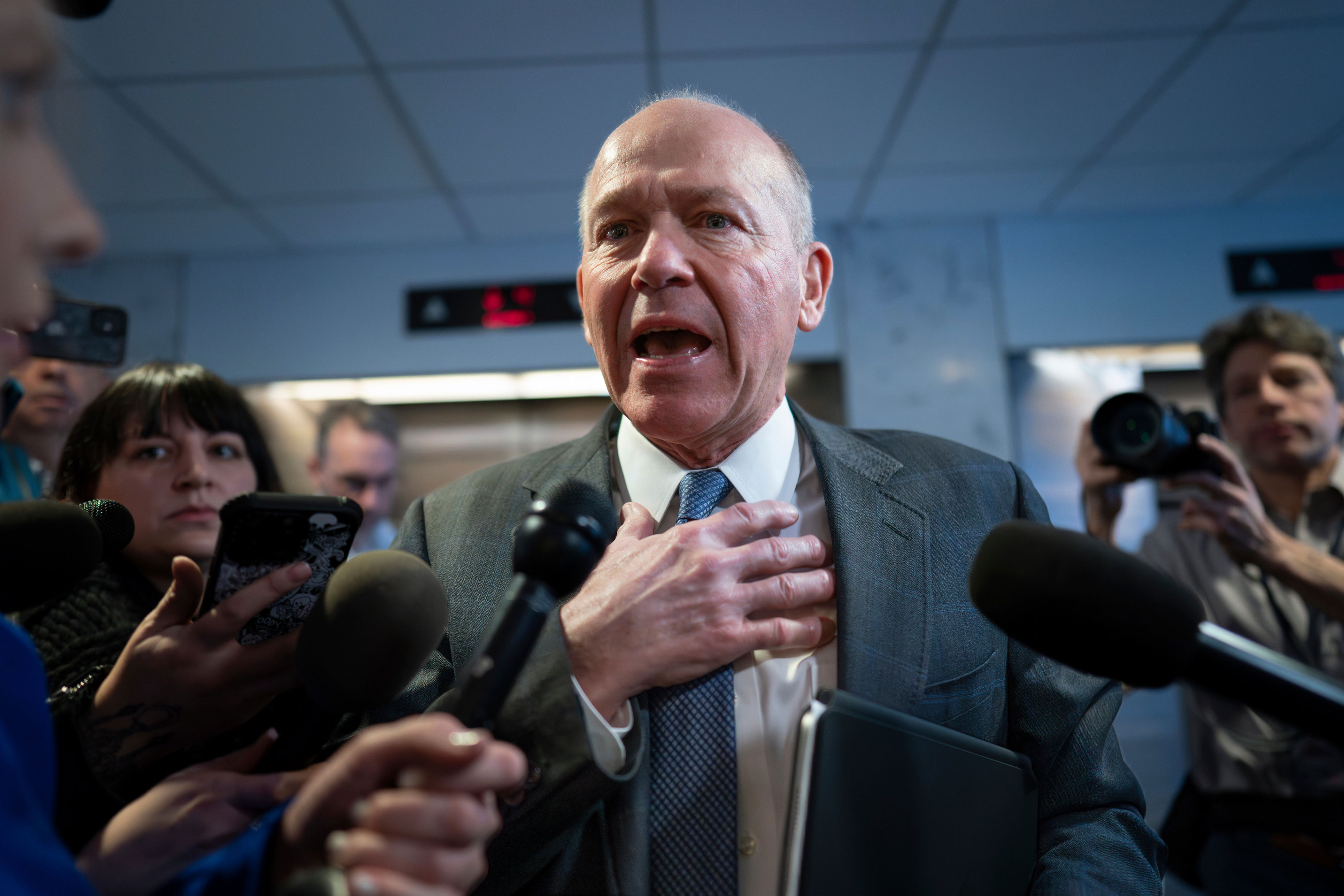
Former Boeing CEO David Calhoun is mobbed by reporters after speaking at the US Senate (Copyright 2024 The Associated Press. All rights reserved)
In 2019, a New York Times investigation found evidence that tools and other random debris – such as loose bolts, metal shavings, pieces of packaging, and even a ladder – were “routinely” left inside of planes, and sometimes inside the engines.
John Barnett, a veteran Boeing quality manager at the Charleston plant, would later testify he had found more than 400 inadequate parts missing from their designated cage, suggesting they had actually been installed into planes illegally and without documentation.
Throughout 2019, 2020, and 2021, the company was repeatedly forced to delay Dreamliner deliveries and spend billions on extra inspections and fixes due to newly-discovered flaws. One airline, Qatar Airways, even refused to accept any Dreamliners not built in Washington state.
Similar problems allegedly plagued the 737 Max program.
Ed Pierson, a former senior manager at Boeing, would later testify to the US House of Representatives that 737 Max workers were overworked and exhausted by excessive overtime, and that he had warned Boeing this could cause safety problems – to no avail.
When Pierson asked his superior to temporarily shut down the plant to address his concerns, the superior allegedly responded: “We can’t do that. I can’t do that.”
Similar issues have since surfaced at Spirit, where the Alaska Airlines plane with the malfunctioning door plug was originally built.
“We have planes all over the world that have issues that nobody has found because of the pressure Spirit has put on employees to get the job done so fast,” a local union leader told The Wall Street Journal.
All of this, Goforth argues, also drove away experienced employees and robbed the company of expertise, degrading its ability to notice problems before they became crises.
‘Shooting the messenger’
Some time in the late noughties or early 2010s, Stan Sorscher was attempting to persuade a Boeing executive that the Dreamliner program had serious problems. Managers, Sorscher warned the executive, were not aware of how bad things had become because their employees felt afraid to raise concerns. One worker had voiced doubts about the capabilities of a supplier, only to be rebuffed by their boss.
Immediately the executive’s assistant jumped up and said: “What’s the name of that supervisor?”
It was, Sorscher alleges, a vivid example of one of Boeing’s biggest problems: a tendency to “shoot the messenger”.
“They could never anticipate anything, and they were always caught flat-footed by some terrible problem that many people in the workplace knew would happen but nobody would say anything about it,” Sorscher says. “And that happened over and over and over and over and over again.”
In Washington state, most workers were unionized and therefore protected from direct retaliation. Even so, Goforth claims that they often came under “tremendous pressure” not to escalate issues to upper management.
“The phrase that’s used with Boeing culture is ‘That’s a career-limiting decision’. People understand that if they push too hard on something, they’ll find themselves maybe on the layoff list next time there’s an economic downturn,” he says.
“Boeing has an ethics line, which I never discourage people from using because I don’t want someone to turn around and sue the union. But most people who have tried reporting through ethics have had an extremely negative experience, and they never do it again.”
In Charleston and elsewhere, the punishments for speaking up were allegedly far harsher. Multiple workers told The New York Times that they were punished for reporting problems, while another told Al Jazeera that he was targeted for insisting on proper documentation.
John Barnett — a 30-year Boeing employee known to friends as ‘Swampy’ due to his Louisiana roots — was allegedly reprimanded for “using email to express process violations”, and said in his whistleblower complaint that he had been repeatedly harassed, humiliated, and demoted for raising concerns (which Boeing denied).
Barnett was found dead inside his truck in a hotel parking lot from a gunshot wound to the head on March 9. He had been giving evidence in a whistleblower lawsuit against Boeing in the days before his death. Coroners ruled the death a suicide and Boeing said it was saddened to hear of his passing. But Barnett’s family told CBS News that they hold Boeing partially responsible for his death, stating that the pressure he was put under after making his whistleblower complaint led to a pronounced decline in his mental state.
An FAA audit would later find dozens of issues in the Max production process.
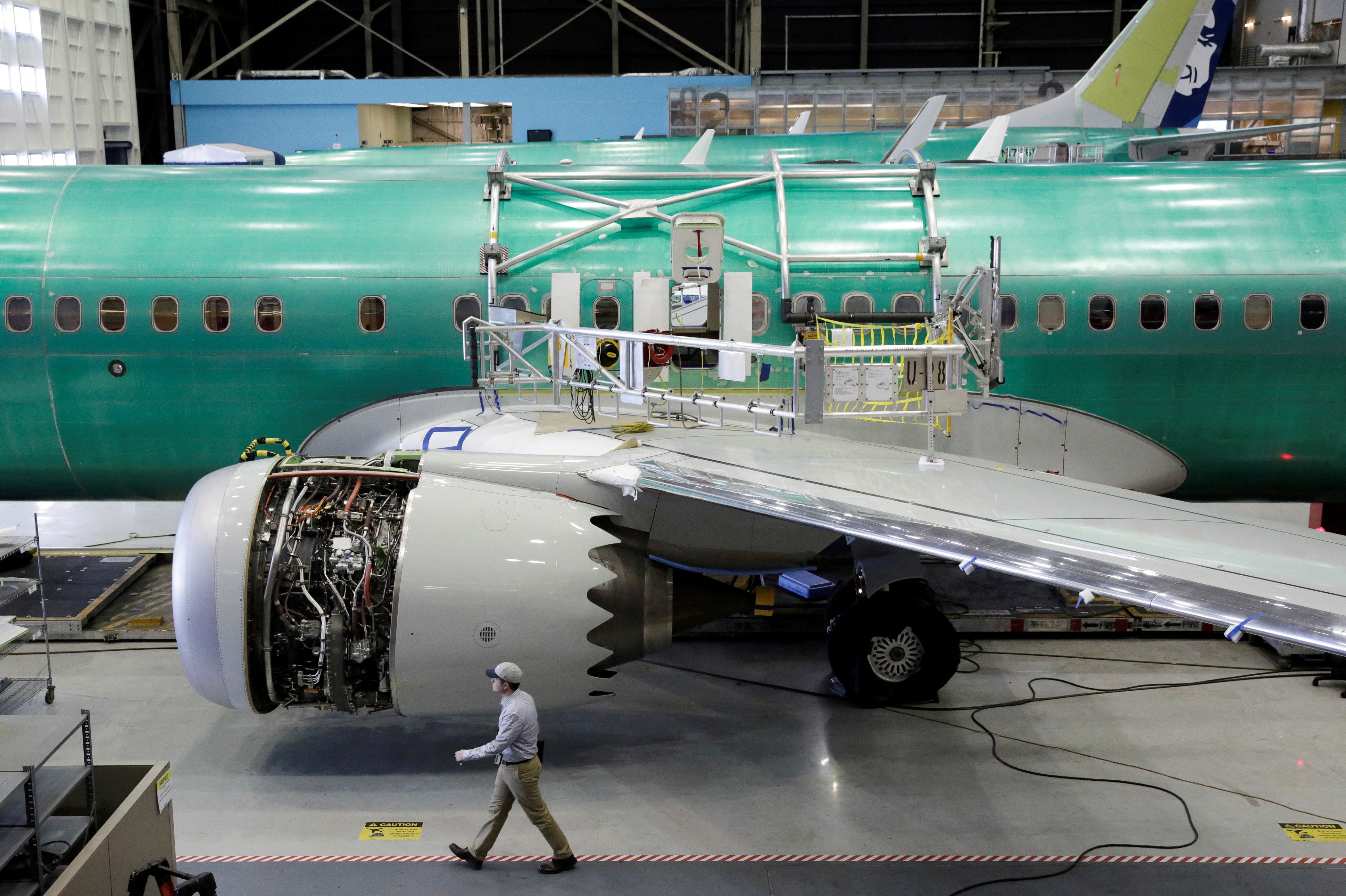
A worker walks past a Boeing 737-MAX under construction (REUTERS)
Last week, another whistleblower named Sam Salehpour alleged that Boeing had taken “shortcuts” to speed up its production of Dreamliners and Boeing 777s, leading to potential structural flaws. He too said the company had punished him for saying this internally, excluding him from meetings and moving him into a new division.
Boeing declined to comment on that specific claim, saying only that “retaliation is strictly prohibited” at the company. It denied Salehpour’s claims about plane production, calling them “inaccurate” and saying it was confident in both models.
To Sorscher and Goforth, it seemed that all the old mechanisms that were meant to catch errors were being disassembled piece by piece. The old Boeing culture regarded every little step of the process as a potential weak link; the new one seemed to regard them as potential redundancies to be streamlined.
“Everyone who works at Boeing puts their own families on these airplanes,” says Goforth. “I genuinely believe that nobody at the company said ‘This might kill people, but we’re going to do it’. It’s a thousand little decisions – ‘Do we really need to do it this way?’ ‘Maybe we can shorten this?’ – that accumulate into danger.”
Investigations ultimately traced the two 737 Max crashes to a complex cocktail of questionable decisions, made in pursuit of Boeing’s bottom line. Executives had been unexpectedly bounced into committing to the Max as they scrambled to retain a major customer, resulting in an unwieldy design with a danger of stalling during certain standard test manoeuvres.
A system called MCAS was meant to compensate for this by automatically pushing the nose downward if it sensed a stall. But a series of unanticipated problems during testing led designers to progressively boost the system’s power while making it more vulnerable to accidental activation.
And, because Boeing had already promised airlines that the Max would require no extra training compared to the 737, it didn’t tell pilots that MCAS even existed – while allegedly rejecting safety features that could have stopped it from malfunctioning.
Hence, the pilots on board Lion Air Flight 610 had no idea what was happening when a broken sensor caused MCAS to activate 26 times in a row. The pilots on Ethiopian Airlines Flight 302 had read a Boeing bulletin revealing the system’s existence, but had no practical experience trying to countermand it when it sent them into a dive.
‘We are all complicit’
None of this happened in a vacuum. For years, following orders from the Republican-controlled Congress of 2003, the FAA allowed Boeing and other companies to “self-certify” their aircraft.
This was necessary, one former official said, because the agency did not have enough inspectors to actually scrutinize them in detail anyway.
Indeed, the FAA signed off on Boeing’s training guidelines for the 737 Max, which did not mention MCAS. It allowed Boeing to handle most of the testing to certify the Max, and allegedly never properly reviewed Boeing’s safety documents.
Meanwhile, many senior politicians supported Boeing in its strategy. Nikki Haley, then the governor of South Carolina, publicly opposed unionization efforts among Boeing workers in her state and was later appointed to its board of directors.
Lindsey Graham, the long-serving South Carolina senator, sharply criticised the Obama administration’s lawsuit over the North Charleston plant.
For Marie Duggan, the roots of the problem extend even further. The fact that Boeing was incentivized to shower shareholders with benefits while squeezing quality was no accident, she says; that is just how we have allowed financial markets to work.
She cites in particular the legalization of stock buybacks in 1982 under Ronald Reagan, which she believes should be reversed. The problem, though, is that doing this now could cause millions of people’s pensions to drop in value.
“In the USA we are all complicit in wanting the stock market to go up,” she says. “And that is particularly true because the social security system does not provide an adequate income to live on for retirement.”
She also floats the idea that the US federal government could take a share of ownership in Boeing, just as the European aviation giant Airbus is partly owned by the governments of France, Germany, and Spain.
The Max crashes, and the Alaska Airlines door plug blowout, have pushed the FAA to crack down. Mandatory groundings and inspections of Boeing models have steadily increased, and in February the agency gave Boeing 90 days to come up with a new quality control plan or have its production capped at “unsustainable” levels.
Ironically, however, it may be Boeing’s customers who have made the biggest difference. “Airline leaders have been frustrated to say the least, and in many respects aghast, at what is going on,” John Strickland, a UK-based aviation industry consultant who visited Boeing’s production line in 2019, tells The Independent.
He cites figures such as Sir Tim Clark, president of Emirates, who said in February that Boeing was in the “last chance saloon”, and Michael O’Leary, boss of the Irish budget airline Ryanair, who demanded in 2022 that Boeing “get their s**t together”.
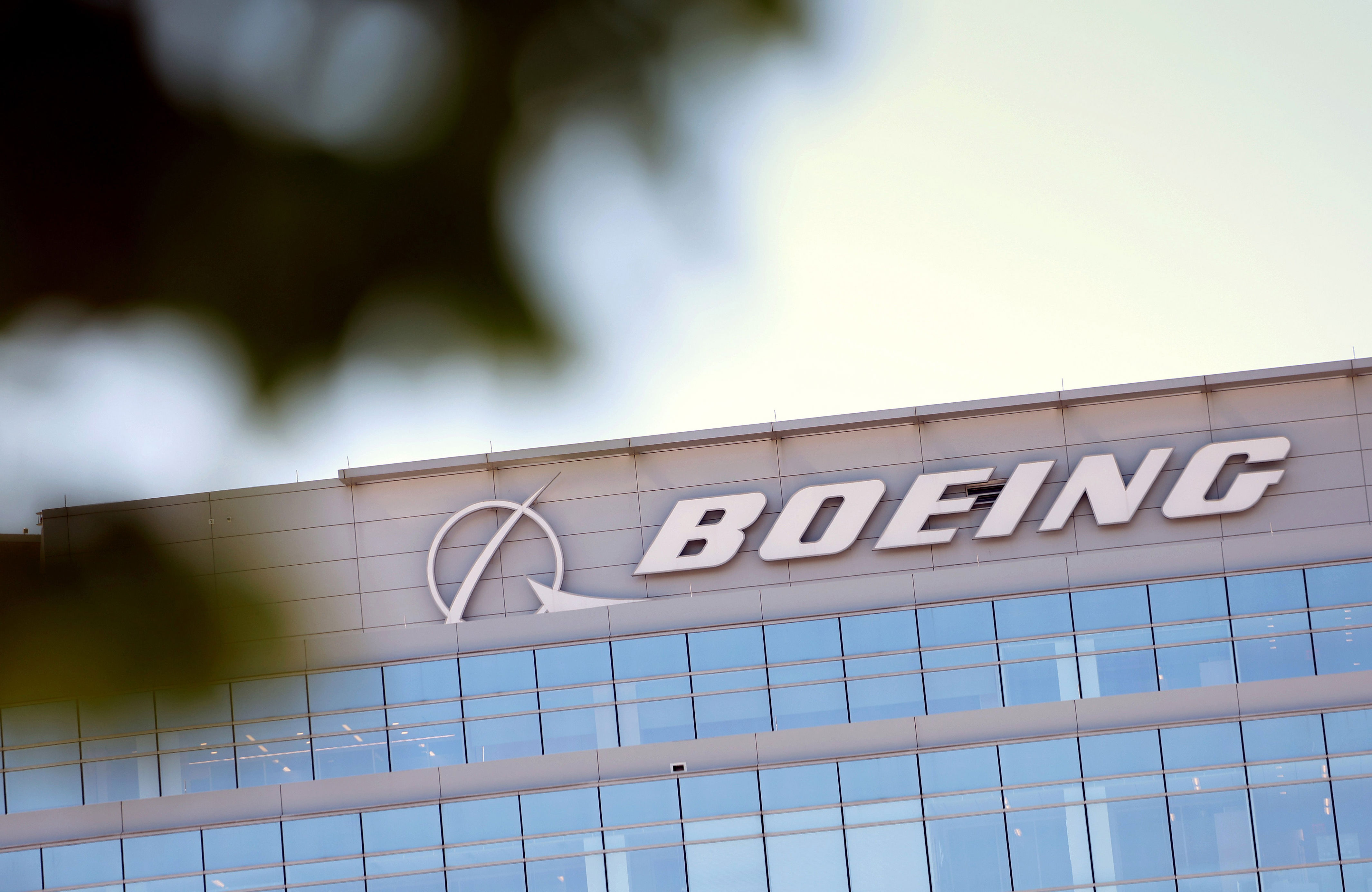
An exterior shot of the Boeing company headquarters in Arlington (Getty Images)
Indeed, Aboulafia credits pressure from airlines with forcing Boeing’s chief executive David Calhoun to announce his departure at the end of this year.
“If Boeing is saved, it’ll be saved by a revolt of the market,” he says. “You look at what has forced this management change – was it investors seeking returns? Bizarrely, it wasn’t. Was it the Pentagon and the US government? Hell no. Ultimately it was the customers saying ‘Yeah, no, enough’.”
The problem is that airlines cannot simply switch away if Boeing fails to deliver. Its only real competitor is Airbus, whose order book is full for years to come, and the incredibly long timescale of plane manufacturing and ordering means any such change wouldn’t happen for up to a decade.
In the meantime, full FAA certification of Boeing’s latest plane – a new version of the 777X – is at least two years late, while hundreds of 737 Maxes churned out during the 2019 groundings are still sitting in a Washington airfield, waiting to be fixed.
In response to questions from The Independent, a spokesperson for Boeing said it had embarked on a comprehensive program of inspections and safety improvements, including stopping its 737 assembly plant for a day to hold an all-hands safety meeting. In 2019 it set up a confidential reporting channel for employees called Speak Up.
The spokesperson declined to make any Boeing executives available for interview, but pointed to a speech last month by chief financial officer Brian West, who said: “For years, we prioritized the movement of the airplane through the factory over getting it done right, and that’s got to change.”
Ray Goforth is skeptical: “I’ve seen nothing that convinces me the leadership of the company has learned a single lesson. They’re saying lots of nice words now, but I haven’t seen anything of substance.”
He alleges that, among other things, Boeing is resisting the union SPEEA’s demands for a new safety reporting process.
A Boeing spokesperson declined to give details about its position in those negotiations, saying only that the company has offered SPEEA “the same agreement” that it signed with another union.
“We believe it will make a difference in ensuring product safety,” the spokesperson said. “This tri-party agreement is modelled after the longstanding and proven Aviation Safety Action Program (ASAP) which is used in the airlines and elsewhere in Boeing.”
Ultimately, Strickland argues, it is Boeing’s own workers that the company needs to convince, just as much as their customers and passengers.
“I’ve been on the factory floor, and seen all the signs they have up about quality and pride in production,” he says. “But you could understand if some of the workforce are thinking: ‘Why should we believe it?’”
A Boeing spokesperson said: “Since January 5th, we’ve been working to ensure that our employees understand that speaking up about concerns, errors, mistakes and changes that could affect the safety of our products is the single best action that every employee at Boeing can take to improve safety and quality. We are also taking action to ensure our managers understand their role in creating Positive Safety Culture and making sure their employees feel safe to report issues and trust that leaders are listening and taking action. We’re also making changes that will simplify and streamline the Speak Up process to ensure it is efficient and thorough in identifying and addressing potential product safety issues.”
From news to politics, travel to sport, culture to climate – The Independent has a host of free newsletters to suit your interests. To find the stories you want to read, and more, in your inbox, click here.
News Related-
Up to 40 Tory MPs ‘set to rebel’ if Sunak’s Rwanda plan doesn’t override ECHR
-
Country diary: A tale of three churches
-
Sunak woos business elite with royal welcome – but they seek certainty
-
Neil Robertson shocked by bad results but has a plan to turn things round
-
Tottenham interested in move to sign “fearless” £20m defender in January
-
Bill payers to stump up cost of £100m water usage campaign
-
Soccer-Venue renamed 'Christine Sinclair Place' for Canada soccer great's final game
-
Phil Taylor makes his pick for 2024 World Darts Championship winner
-
Soccer-Howe aims to boost Newcastle's momentum in PSG clash
-
Hamilton heads for hibernation with a word of warning
-
Carolina Panthers fire head coach Frank Reich after 1-10 start to the season
-
This exercise is critical for golfers. 4 tips to doing it right
-
One in three households with children 'will struggle to afford Christmas'
-
Biden apologised to Palestinian-Americans for questioning Gaza death toll, says report
